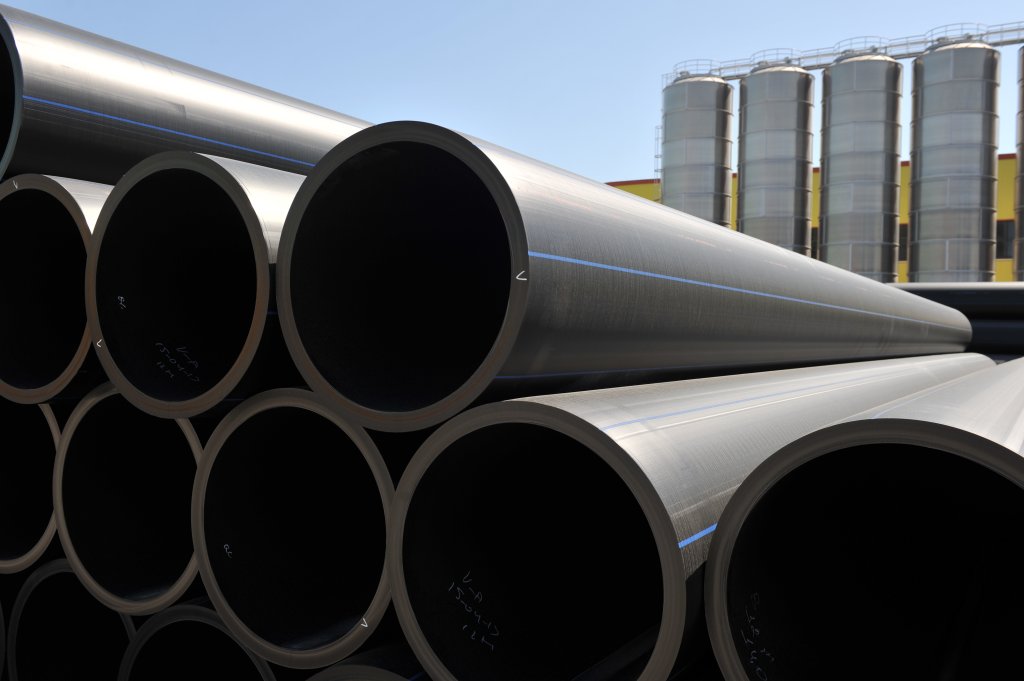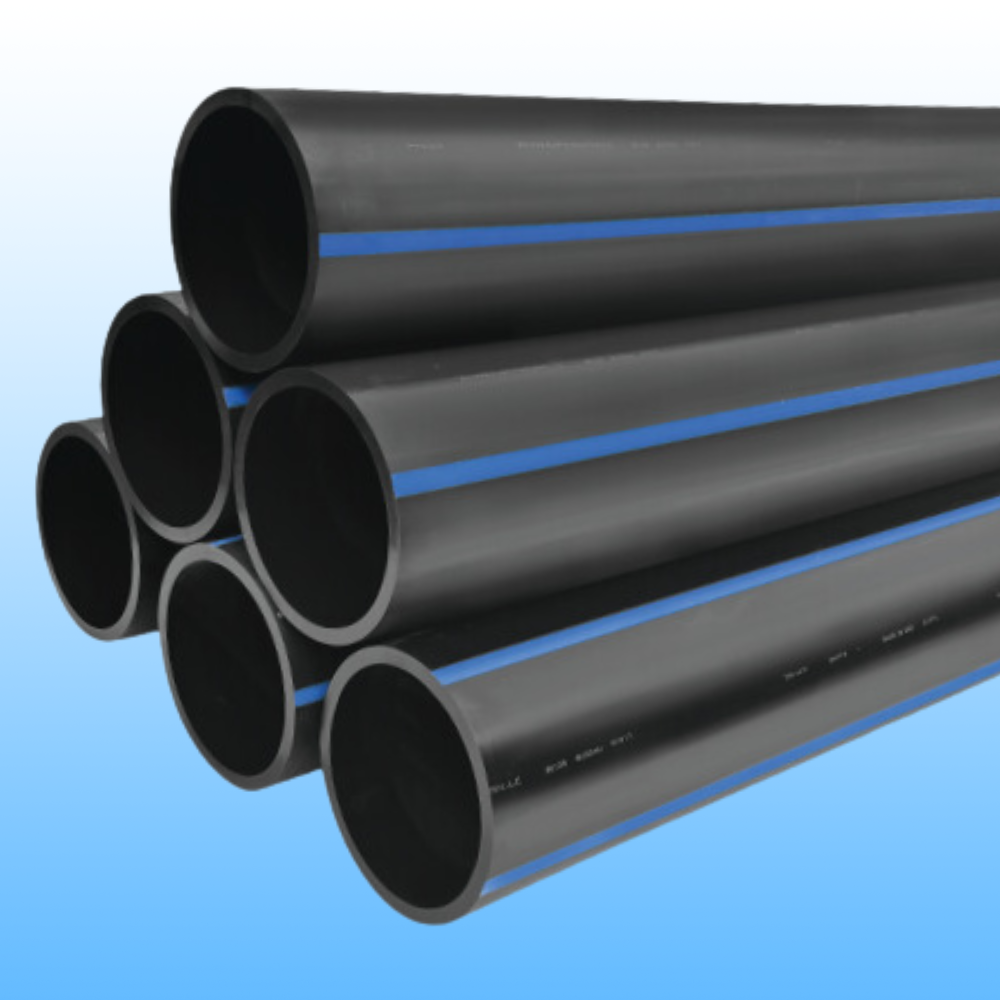Pipe Manufacturing Midland TX: From Raw Material to Finished Pipe
Wiki Article
Explore the Manufacturing Refine Behind High-Quality HDPE Pipeline and Its Applications
The manufacturing process of premium HDPE pipelines is intricate and systematic. It starts with the option of basic materials that improve efficiency. Following this, ethylene undertakes polymerization to form material, which is after that shaped through extrusion. Quality control is extremely important, making sure that the end product meets rigid standards. The journey of HDPE pipes doesn't end with production. Their applications throughout numerous industries expose a more comprehensive value worth examining.Comprehending HDPE: Residences and Advantages

High-density polyethylene (HDPE) is a flexible thermoplastic recognized for its toughness and resistance to different environmental elements. This product exhibits exceptional tensile strength, making it appropriate for requiring applications. Its low-density structure adds to a light-weight product, helping with ease of dealing with and installment. HDPE likewise showcases impressive resistance to chemicals, which minimizes degradation when subjected to rough compounds.
The material's reduced moisture absorption better enhances its long life, making it perfect for usage in pipelines and tank. Additionally, HDPE is resistant to ultraviolet (UV) radiation, making certain that products maintain their stability even when exposed to sunlight. Its versatility permits for the production of elaborate shapes without endangering strength. The green nature of HDPE, typically stemmed from recycled products, contributes to its charm, promoting lasting techniques in production. On the whole, these homes and benefits make HDPE a recommended selection for numerous industrial and consumer applications.
Raw Material Selection for HDPE Production
The selection of resources for HDPE production is necessary to confirm the end product meets the preferred requirements and quality standards. High-density polyethylene (HDPE) is largely produced from polymerized ethylene, derived from fossil gas such as natural gas or unrefined oil. The quality of these feedstocks substantially affects the mechanical and thermal residential or commercial properties of the last HDPE.Ingredients likewise play a significant role in improving HDPE's efficiency, including antioxidants, UV stabilizers, and colorants, which enhance durability and resistance to ecological factors. The selection procedure must consider not only the chemical composition of the raw products but likewise their processing attributes to assure effective production.
The sourcing of raw materials should focus on sustainability and compliance with environmental regulations, as responsible practices are critical in today's market. Inevitably, mindful raw material choice lays the foundation for producing top notch HDPE pipes appropriate for diverse applications.
The Extrusion Process: Forming HDPE Pipe
The extrusion procedure plays a crucial role in shaping HDPE pipes, starting with precise product preparation methods that ensure perfect flow and consistency. Just as important is the layout of the die, which directly influences the final dimensions and surface area top quality of the pipe. With each other, these factors contribute significantly to the effectiveness and top quality of HDPE pipeline production.Product Prep Work Strategies
Effective manufacturing of HDPE pipelines begins with precise material preparation techniques, especially the extrusion process. During this phase, high-density polyethylene material is first dried to remove wetness, making sure suitable circulation characteristics. The resin is after that fed right into the extruder, where it undergoes home heating and melting, changing right into a thick state. This home heating procedure is very carefully regulated to maintain the product's integrity and performance. The molten HDPE is required with a die, forming it into a continual pipeline form. Appropriate temperature level management during extrusion is important, as it directly impacts the product's residential or commercial properties and the final product high quality. As soon as formed, the HDPE pipe is cooled down and cut to specified sizes, ready for subsequent handling and applications.Die Design Relevance
Precision in die style plays an important function in the extrusion process of HDPE pipes. The die serves as the last shaping tool, directly affecting the pipeline's dimensions, wall density, and surface area coating. A properly designed die warranties uniform product circulation, minimizing defects such as abnormalities and weak areas. The geometry of the die need to be optimized to suit the details residential properties of HDPE, including its viscosity and thermal actions throughout extrusion. In addition, the cooling price of the product as it goes through the die can significantly impact the pipeline's structural integrity. As a result, spending in sophisticated die innovation is essential for suppliers aiming to produce top notch HDPE pipes that meet market standards and client expectations.Quality Assurance Measures in HDPE Production
Although different factors influence the high quality of HDPE pipeline production, efficient high quality their explanation control procedures are essential to assure uniformity and dependability in the final item. Trick quality assurance methods include rigorous product assessment, validating that the raw polyethylene satisfies well established standards for pureness and thickness. Throughout the extrusion procedure, specifications such as temperature level, stress, and cooling time are carefully monitored to maintain dimensional accuracy and architectural integrityIn addition, post-production testing is essential; producers often carry out hydrostatic examinations to examine the pipeline's stamina and resistance to stress. Aesthetic examinations for surface area flaws better boost quality guarantee. Accreditation from appropriate criteria organizations, like ASTM or ISO, gives an extra layer of credibility. By applying these detailed high quality control steps, producers can reduce defects, boost performance, and make certain that the HDPE pipes satisfy the specific demands of various applications, ultimately bring about customer fulfillment and count on the product.
Applications of HDPE Pipe Throughout Industries
HDPE pipelines are made use of throughout numerous fields as a result of their sturdiness and convenience. In water circulation systems, they ensure efficient shipment, while in wastewater management, they provide trustworthy options for waste transportation. In addition, agricultural watering networks take advantage of HDPE's resistance to deterioration and flexibility, making it a suitable option for contemporary farming methods.
Water Circulation Equipments
A considerable number of industries depend on high-density polyethylene (HDPE) pipelines for effective water distribution systems. Known for their resilience and resistance to deterioration, HDPE pipes are commonly utilized in local water supply networks, agricultural watering, and industrial applications. Their light-weight nature helps with easy handling and setup, reducing labor prices and time. Additionally, HDPE pipelines can fit different stress degrees, making them suitable for both reduced and high-pressure systems. custom hdpe pipe manufacturing Midland TX. The adaptability of the product permits for seamless integration into existing infrastructure, reducing the requirement for considerable excavation. HDPE's resistance to chemical seeping guarantees that the water supplied stays secure and clean, making it an optimal option for preserving the high quality of safe and clean water throughout numerous sectors.Wastewater Monitoring Solutions
Reliable water circulation systems likewise lead the way for ingenious wastewater administration solutions, where high-density polyethylene (HDPE) pipes play a substantial role. Renowned for their resilience and resistance to deterioration, HDPE pipelines are excellent for transporting wastewater in various settings. Their versatility enables simple setup in intricate settings, decreasing the demand for comprehensive excavation. In addition, HDPE's smooth interior surface minimizes rubbing, improving flow rates and efficiency. These pipelines are likewise immune to chemical leaching, making sure that contaminants do not jeopardize the surrounding atmosphere. Industries, communities, and therapy centers progressively depend on HDPE pipelines for their integrity and durability, making them a favored choice for modern-day wastewater administration systems. This versatility underscores the critical significance of HDPE pipes across numerous applications.Agricultural Irrigation Networks
Agricultural watering networks profit significantly from the usage of high-density polyethylene (HDPE) pipes, which provide reliable and trustworthy water distribution to crops. HDPE pipes are lightweight, making them easy to deliver and mount, while their flexibility permits numerous configurations in diverse surfaces. These pipelines show superb resistance to corrosion, chemicals, and UV radiation, ensuring sturdiness in severe agricultural environments. In addition, their smooth indoor surface minimizes friction loss, optimizing water flow and reducing power prices related to pumping. The long life of HDPE pipelines, usually going beyond 50 years, adds to lower maintenance and substitute expenses. As a result, farmers progressively rely upon HDPE pipes to boost watering effectiveness and advertise sustainable farming techniques, eventually resulting in improved plant returns and resource conservation.Future Fads in HDPE Pipe Modern Technology
As the demand for lasting and effective framework grows, developments in HDPE pipe innovation are positioned to transform various sectors. Emerging trends include the combination of clever modern technologies, such as sensors and IoT capabilities, which facilitate real-time tracking of pipe conditions, decreasing upkeep prices and protecting against leakages. Additionally, see post the advancement of sophisticated production techniques, such as 3D printing, is making it possible for the manufacturing of facility, personalized pipeline designs that provide to details project demands.Additionally, the emphasis on recycling and round economic climate techniques is driving the advancement of HDPE pipelines made from recycled products, boosting sustainability. Enhanced jointing techniques, such as electro-fusion and mechanical installations, are also improving installment effectiveness and reliability. The growing emphasis on environmental laws is pressing producers to embrace greener manufacturing processes, guaranteeing that HDPE pipelines not only fulfill industry standards however additionally foster an even more sustainable future for facilities advancement.
Frequently Asked Questions
Just How Does HDPE Compare to Various Other Plastic Products?
HDPE outperforms several other plastic products relating to longevity, chemical resistance, and flexibility. Its reduced density and high tensile stamina make it ideal for various applications, often going beyond choices in both performance and durability.What Are the Ecological Influences of HDPE Manufacturing?
The environmental influences of HDPE manufacturing include greenhouse gas emissions, energy consumption, and possible air pollution from making processes. Furthermore, incorrect disposal Find Out More can bring about dirt and water contamination, increasing concerns about long-term ecological effects.Can HDPE Pipes Be Recycled?
Yes, HDPE pipes can be recycled. Several facilities approve used HDPE for handling, changing it into new products. This reusing adds to sustainability initiatives, reducing plastic waste while saving sources and energy in the production cycle.What Is the Life-span of HDPE Pipeline?

How Do Temperature Variations Impact HDPE Pipeline Performance?
Temperature level variations significantly affect HDPE pipe performance, impacting flexibility and toughness. High temperature levels can lead to softening, while low temperature levels might create brittleness, eventually influencing the pipe's toughness and viability for different applications in diverse atmospheres.Report this wiki page